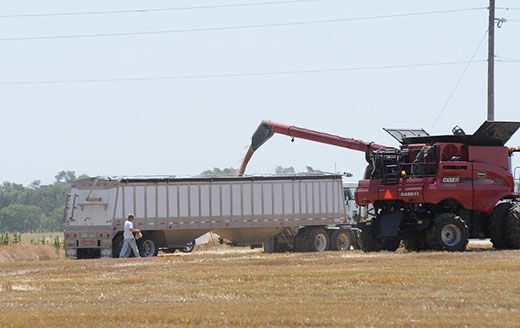The U.S. Department of Agriculture announced it is awarding more than $10 million in Farm to School Grants to 123 projects across the country. Additionally, for the first time, the department is empowering states with $60 million in non-competitive grants to develop stronger and sustainable Farm to School programs over the next four years. Both actions will help more kids nationwide eat healthy, homegrown foods.
Farm to School increases the amount of locally produced foods served through child nutrition programs, while also educating children about how their foods are harvested and made. Various child nutrition operators can participate in farm to school, from states and tribal nations to schools and community organizations.
“The expansion of Farm to School is more important than ever for our kids,” said Agriculture Secretary Tom Vilsack. “When schools and local producers work together, children benefit from higher-quality foods on their plates and program operators have stable sources for the products they need.” Vilsack added farm to school is an investment in the next generation and one of many ways the department is advancing nutrition security—the consistent, equitable access to healthy and affordable foods that promote well-being.
The 123 projects funded by the fiscal year 2022 competitive grants will serve more than 3 million children at more than 5,000 schools in 44 states and the District of Columbia. Further, USDA acknowledges that many people have been historically underserved and marginalized through unfair food systems. The projects selected by the department reflect its commitment to transforming food systems to be more equitable through Farm to School:
-
An estimated 62% of students served by these projects are eligible for free and reduced-priced school meals.
-
40% of projects serve rural areas or economically disadvantaged areas.
-
Nearly 30% of organizations are led by Black, Indigenous, and People of Color, with projects serving those same communities.
-
Seven projects are tribal nations serving Native American communities.
Since the USDA Farm to School Program’s inception in 2013, the department has awarded nearly $75 million in Farm to School Grants, funding more than 1,000 projects across all 50 states, the District of Columbia, U.S. Virgin Islands, Guam, and Puerto Rico. These projects have reached over 25 million students in nearly 60,000 schools. For more information on how your community can get involved with Farm to School activities, visit the FNS website.
Additionally, as announced last month, the department’s $60 million non-competitive grants for states will allow them to better assist program operators in purchasing and using more local foods in meals for kids between Fiscal Years 2023-2026. The resources will also expand agricultural education for children. More information about the distribution of funds is coming soon.
“States and school districts with strong Farm to School programs have been more resilient in the face of recent supply chain disruptions, compared to operators lacking relationships with local producers,” said Stacy Dean, deputy under secretary for Food, Nutrition, and Consumer Services. “The Farm to School program deserves to be at the forefront of long-term solutions that operators can lean on to ensure nutritious, local products are always within reach.”
When schools source foods locally, it supports American farmers and strengthens the economy. USDA surveyed school food authorities nationwide in the 2019 Farm to School Census. According to the findings, in school year 2018-2019, school districts purchased nearly $1.3 billion in local fruits, vegetables, and other foods, totaling approximately 20% of all school food purchases.



